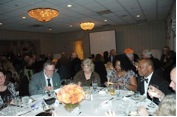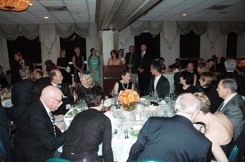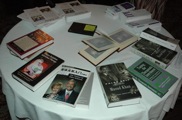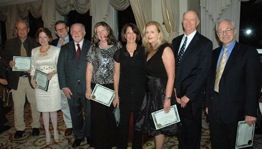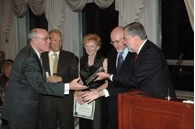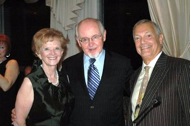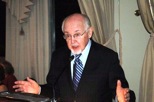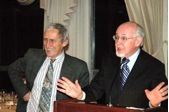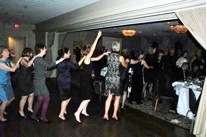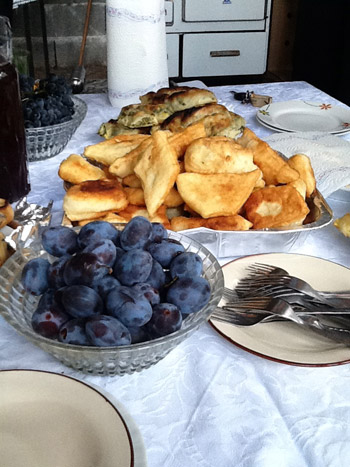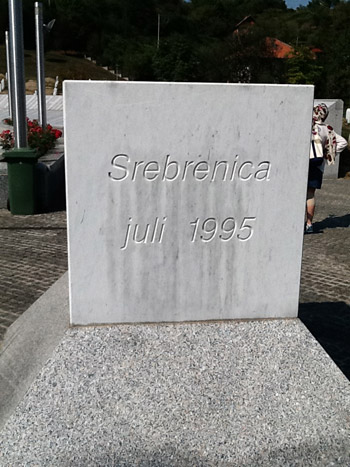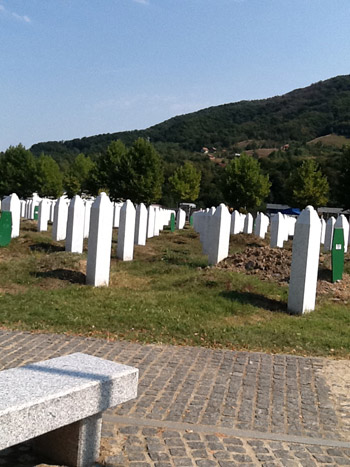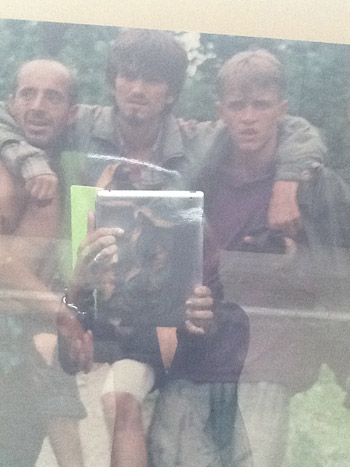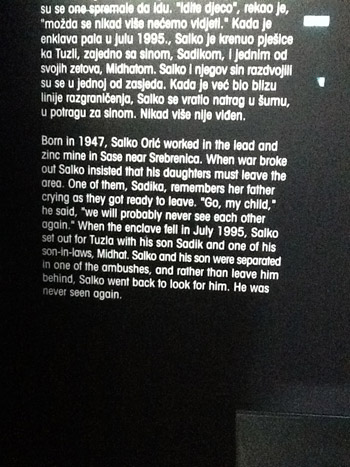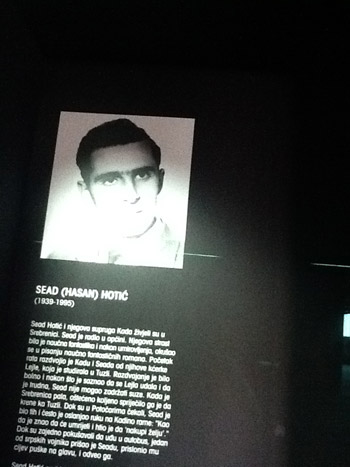Charles Ashbach, Ph.D., therapist in the Philadelphia area.
Faculty of the International Psychotherapy Institute (IPI)
Faculty of the Philadelphia Psychotherapy Study Center (PPSC).
E-Mail: cashbach1@verizon.net.
The training for psychotherapy by and large focuses, as it should, on the development of capacities within the therapist that enable him or her to make contact with the emotional and psychic-unconscious dimensions of the self and through this “self development” comes the capacity to be able to tune in and detect the unconscious of the patient’s mind, self and personality. The development of empathy, intuition, patience, perspective, context, symbolism and the negative capability are all emphasized in helping a person prepare for the rewarding, though incredibly demanding profession of psychotherapist. I want to share some thoughts I’ve come by in the study of our most demanding profession.
For some years I have been a member of a group of colleagues who have been studying the primitive dimensions of the human personality. Not only through various schools and approaches within psychoanalytic psychology but also through myth, anthropology, sociology and the history of religion. During that time I was fortunate to come upon the origin of the word therapist. This occurred when a colleague of mine commented on a seminar he had attended and how the presenter made mention of the root of the English word therapist being the Greek word Therapon. My colleague said it had to do with the master-slave relationship between a royal and his servant.
I was struck by this idea and my research revealed the Greek word Therapon described an individual whose job or role was to be an attendant, companion of lower rank, aide, minister, slave, servant or replacement committed to the willing sacrifice for a human master or supernatural deity. It was used in the Old Testament to describe Moses’ relationship to his god, and was understood as “servant” of god. I was especially impressed by the “sacrificial” aspect of the term when understood as “slave,” “servant” or “replacement.” Further research revealed the use of the Therapon in Homer’s Iliad regarding the role of Patroclus.
In the Iliad, Patroclus, Therapon to mighty Achilles, takes up Achilles’ cause when he (Achilles) peevishly withdraws from the battle against the Trojans after an argument with King Agamemnon. In that dispute Agamemnon demanded a certain public deference from Achilles as well as demanding that Achilles give up his beautiful female slave to Agamemnon. Patroclus, recognizing the de-moralizing threat of Achilles’ withdrawal, put on his master’s majestic armor and went out onto the field of battle to fight the mighty Trojan warrior, Hector. Patroclus sought to save the day for Greece and to save Achilles’ sacred name. Of course he did neither. Hector immediately killed Patroclus and his death spurred the mighty Achilles to take us his weapons and defeat the Trojan army and drive them back behind the Walls of the city.
The point here is that the Therapon is prepared to sacrifice his, or her, life for the good of the master. The implication being, that at the core of the human unconscious is a sacrificial component, an archetype if you will, that motivates an individual to take up a particular form of subjugation and sacrifice as their life’s work. This seemed to be very important to reflect upon.
Heinrich Racker in his brilliant treatise on the role of the therapist, Transference and Countertransference (1968) writes compellingly about the unconscious need at the core of the therapist’s personality to rescue his or her own internal damaged objects. He says we become therapists to repair and restore these precious objects in order to free ourselves from the responsibility and guilt of having let them down or aggressed against them. Ultimately, Racker believes, that our metabolization of this guilt provides the path to become a competent, caring and realistic professional, empowered but limited, motivated but not manically so. As Freud says that we must be careful not to seek cure at any price. The goal of therapy, Freud says, is to offer the patient the awareness of choices and then ultimately to stand back so he or she can make the choices that define their life.
Racker seeks to remind us that it is the encounter with our unconscious that prepares us for the encounter with the patient’s. It is our ability to acknowledge our limits and our vulnerabilities, our terrors and our dreams, that help us to offer this form of integration and humility to our patients.
In the work with the most difficult and demanding group of patients, those that occupy the class that Freud (1923) described as manifesting the “negative therapeutic reaction” (NTR), we frequently encounter the collision of our therapeutic self with the split self of the patient. The patient’s self is split due to the operation of traumatic components that have driven that individual to both desperately seek help and simultaneously to resist help and the dreaded dangers of change and transformation. We realize after some time and a great amount of suffering that the collision between these two aspects of the patient’s self means a great challenge to our therapeutic self.
With such patient’s there is a desperate need to see the self as “innocent” and the “victim” of circumstances. These needs clash with their unconscious dimension of self-awareness that perceives the aggression and conflict that flows and has flowed from their self toward their objects. This battle between their love and hate, that is their primordial ambivalence, is complicated by the attack of the super-ego that holds them in a dreadful state of moral judgment and condemnation. Melanie Klein (1935) defines this moment as the crisis of the “depressive position.” Often their only recourse is to projectively identify their dilemma into and onto the therapist and ask us to take their place on the sacrificial altar of their relentless self-judgment, punishment and guilt.
Here the battle between empathy and enmeshment is most acutely engaged. The patient frequently feels that “if we loved them” we would take their place in their struggle with their bad-object conscience. Other times they identify with the bad object and seek to have us offer up ourselves so that they may remain free and clear of any responsibility for the injuries to their love-objects. In either the depressive or the paranoid version of the request, the patient is asking us to become the “scapegoat” for them. It is here that we must be able to delineate the various sectors of their unconscious to help them to see what they are asking of us, and what their internal world of bad objects hold over their souls. We might say at moments like these that are repeated over and over again, across a great span of time, that the patient is asking us to renounce our role of “therapist” and take on the role of Therapon.
Wilfred Bion (1970) says that the therapist must be able to “suffer” what the patient is tortured by in order to establish credibility with them. He says we must be able to enter into an at-one-ment (atonement) with them in order to offer them the evidence that they are not locked away in the past position of abandonment or withdrawal being lived out in the transference. As with all such states of identification, they are transitory. Eventually they must be aided to see they are not the monsters they fear nor the angels they dream of. Neither love nor hate will ever produce the desired outcome of integration, acceptance and most importantly, the mourning of the impossible dream lurking at the core of the self.
Our attention and attunement is to be directed toward the internal conflicts that are at the core of the patient’s problems and become projected on to and into the therapeutic relationship. We can offer help that might assist them in solving their problem but we must not climb upon the sacrificial altar in their place. Such sacrifice might meet the therapist’s unprocessed needs but does not lead the patient forward to be able to realize the complexity of their circumstances and the requirements necessary to achieve a productive separation and creative independence.
Notes.
Bion, W. (1970), Attention and Interpretation. London, Karnac, 1984.
Freud, S. (1923), The ego and the id. Std. Edition, Vol 19. , 48-59.
Klein, M. (1935) A Contribution to the Psychogenesis of Manic-Depressive States. Int.J. Psycho-Anal, 16.
Racker, H. (1968), Transference and Countertransference. IUP, Madison, CT.

